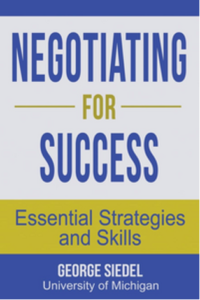Investing in real estate for beginners is an old-fashioned way to get rich quickly and become financially independent. Though it may be daunting to think about every possible alternative and strategy, it is essential. If you are a real estate investor considering getting into the apartment investment market, you should know that a certain amount of risk is involved. Therefore, it is essential to familiarize oneself with low-risk real estate investment strategies.
1. Wholesaling
One way to make money in real estate is through apartment investing, which is called wholesaling. Real estate investors aim to profit by purchasing run-down homes and reselling them. Selling the contract will serve you profit rather than actually owning it.
Making a quick profit with little to no initial capital outlay is feasible. Working remotely and adapting to your schedule are two additional benefits of wholesaling, which do not necessitate any property management or repair training. In addition, it can be not easy to find good investment opportunities, manage costs, and accurately appraise a property’s value. Creating relationships and negotiating well are also essential skills for wholesalers. To master the art of negotiating, read this book called “Negotiating for Success.”
2. BRRRR
BRRRR, which stands for “Buy, Rehab, Rent, Refinance and Repeat,” is a common home investment method. It includes buying an under-construction building, fixing it up, renting it out, selling it to get equity, and then using it to buy more properties. Building a rental property business with little to no money down is possible. But finding good investment opportunities, managing the renovation process, finding tenants, and getting financing all take a lot of work and skill. If you are a home decor enthusiast, add this Jaliea Handmade Earthenware Table Vase for an appealing renovation.
3. House Hacking
An investment strategy known as “house hacking”, a real estate investing for beginners, involves purchasing a multi-unit building, occupying one unit and renting out the rest. This approach allows investors to cut their living expenses and improve their cash flow while producing rental revenue and having a place to reside.
The advantage of house hacking is that you may be able to reduce your home expenses and earn money from rentals, freeing up more money for other things. However, you have to be actively involved in finding renters, fixing and maintaining the property, and handling tenant issues. Not everyone will be happy living in close quarters with other renters. To add insult to injury, this home investment strategy may only be applicable in some housing markets.
4. Flipping
In real estate investing, “flipping” is making a home investment at a discount, making necessary repairs, and reselling it for a profit. If you are creative and interested in real estate investing, you can use your talents in home design and renovation by flipping houses. However, unanticipated maintenance expenses, shifts in the market, and increased competition are just a few of the dangers of flipping for real estate investing for beginners. Add this Upholstered Metal Canopy Bed to your bucket list for better home designing options!
5. Crowdfunding
Through real estate crowdfunding, individuals or groups of internet users pool their resources to finance specific real estate projects. In most cases, the money is put toward a particular project, such as a new construction, home investment, or refurbishment, and the return on investment for the investors is contingent upon the project’s success.
Advantages include the option of apartment investing with modest minimum investments and the possibility of big returns. Crowdfunding also makes real estate investments available to more people, even those without the financial means to own houses outright. However, variations in the project’s success or market conditions might affect the investments. Furthermore, investors could not have any say in how the property or project is run, which could affect their return on investment.
6. Airbnb Arbitrage
One strategy for making money on Airbnb is to lease houses for an extended period and then rent them out for shorter periods through websites like Airbnb. This tactic takes advantage of the disparity between the cost of a long-term lease and the income from a short-term rental. This home investment strategy works wonders in places where businesses and tourists congregate, as the cost of short-term rentals can easily outstrip that of long-term leases. Since Airbnb arbitrage does not necessitate property ownership, it is viewed as a lower-risk venture. Lessee and setup charges are the major investment. Airbnb Arbitrage is a complicated process, I would recommend you to read “How To Start And Scale Your Airbnb Business Without Owning Property” before starting it.
The technique uses the disparity between long-term leasing expenses and short-term rental revenue to generate large returns without committing to a property purchase. Those with a background in hospitality and a knack for satisfying guests will do well with this tactic. Anyone good at making rental spaces appealing but who wants to invest less money in buying property would be a good fit for this.
7. Turnkey
A method of real estate investing for beginners known as “turnkey” involves purchasing a property that has already been renovated, rented out, and managed by a third party. As a “turnkey” property, the house is typically offered for immediate rental.
One advantage is how convenient and easy it is for passive income in real estate. Investors can save the hassle of locating tenants and sprucing up properties by purchasing properties that have already been renovated and rented out. However, the cash flow could be smaller than that of other real estate investments because of the higher costs of buying and managing the properties. Additionally, the owner may have less control over the property and the selection of tenants, which could impact the investment returns. Consider adding a Gallery Wall Wood Frame Set to the main wall to add a personal, unique touch to your real estate investment.
8. Real Estate Investment Trusts (REITs)
These allow investors to combine their funds to purchase a portfolio of income-producing rental assets, such as flats, office spaces, or warehouses. Investors can buy real estate without taking on the property management responsibility for apartment investing through real estate investment trusts (REITs), frequently traded on stock exchanges.
With little outlay of capital and easy access to funds, a diversified portfolio of property investments is within reach. High dividend yields are another perk of home investment in real estate investment trusts (REITs). The investment’s worth may rise or fall depending on market conditions, and dividends are not guaranteed. Real estate investment trusts (REITs) charge management fees and other expenses, further reducing yields.
9. Buy And Hold
As an option of passive income in real estate, “buy and hold” refers to purchasing a home to maintain for a lengthy period, typically ten years or more. This strategy is designed to take advantage of property values rising over time while simultaneously generating passive income from rent.
The potential benefits include a steady stream of income and the opportunity to amass wealth over time. It will protect you from inflation and provide a respite from other assets. The bad news is that real estate investments are sometimes straightforward to liquidate in need. Tenants who fail to pay rent, vacancies, and property damage are some of the hazards that landlords face. Get your hands on the book “The Buy and Hold Real Estate Strategy” for the right choices.
10. Private Lending
One real estate investment method is private lending, in which one party lends money to another, usually another investor or developer, to fund a property or project. With the property or project serving as security, the investor can receive interest on the loan.
The advantage of private lending is the low risk and large return potential. Private lenders can only collect interest payments at regular intervals and enjoy a reliable source of revenue if they are directly involved in property management. Because the investor gets to pick the borrower and the loan terms with private lending, they also get more say over the investment. But you must know there’s no assurance that the loans will stay put, so they could default or experience market swings. Furthermore, for passive income in real estate, you must consider the borrower’s creditworthiness and business plan viability.









